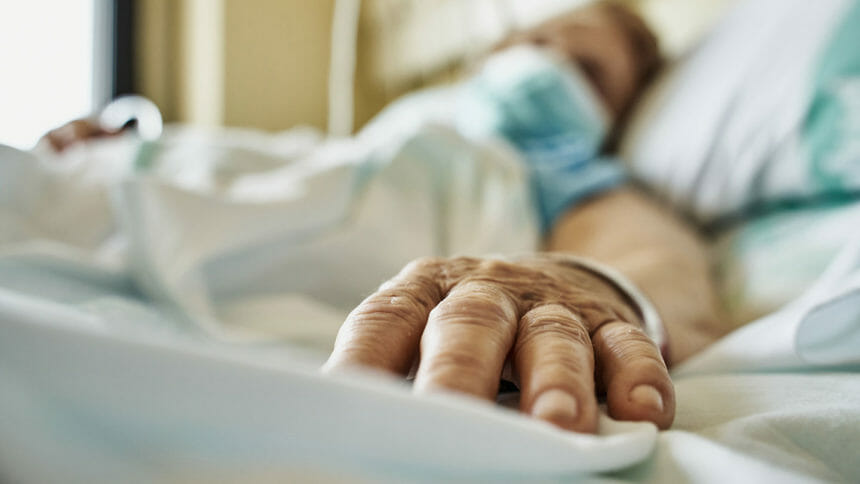
Wrist-worn wearables and under-mattress sensors hold significant potential for early disease detection in skilled nursing facilities, according to a trial conducted by SNF clinicians.
The pandemic was the backdrop for this and many of the studies presented at the PALTC22 AMDA Annual Conference, which ran March 10 to 13. In the wearables study, residents wore a bracelet that detected continuous oxygen saturation. In addition, their beds were equipped with an under-mattress sensor to track activity such as tossing and sleep disturbances.
The devices detected early changes in oxygen saturation fluctuations and other biometrics that predicted decline due to COVID-19 a full two weeks in advance, reported Sabine Von Preyss-Friedman, M.D., chief medical officer of Avalon Health Care Group. These signs were not readily detectable by staff when making their routine resident checks, she and her colleagues noted.
Other COVID-19-related SNF studies presented at the conference focused on the following:
Infection control. Researchers interviewed nursing home clinicians, infection preventionists and Minimum Data Set coordinators at 13 facilities nationwide and found “significantly enhanced and more uniform” infection control practices during the pandemic. The consensus was that these elevated IPC practices contributed to staff burnout, but also that they led to fewer influenza outbreaks. Most agreed that mask-wearing would continue “well into the future,” although they didn’t necessarily agree that it should.
Pain medication. Investigators from Michigan State University found no significant difference in reported pain medication prescriptions or frequency before and after the COVID-19 era. “Acetaminophen is the most commonly used, most effective and safe pain management medication for nursing home residents, followed by opioids,” they noted.
Enrichment. Another study from Michigan State on the effect of enrichment activities in Texas, Florida, and California nursing homes revealed the intensity of COVID-19’s impact on community life. “There was a good use of technology in keeping the residents’ communication with their families, but still the immense impact of COVID-19 was largely undefeatable,” they concluded.
Lockdowns. A study from overseas, on the other hand, found no evidence that the Netherlands’ lockdown had a group effect on mood, behavior or social and cognitive functioning in residents of Dutch facilities. Although care providers reported a great degree of individual variation, the efforts of care staff may have mitigated the effect of the lockdown at the group level. “LTCFs have learned lessons from this historical event which they continue to apply,” investigators concluded.
Additional details on these studies and more long-term care-specific research can be found via the AMDA conference portal.
Other notable pandemic-related research tackled questions involving visitor bans, vaccination promotion, the unintended consequences of isolation and LTC clinicians’ pandemic telehealth experiences.




